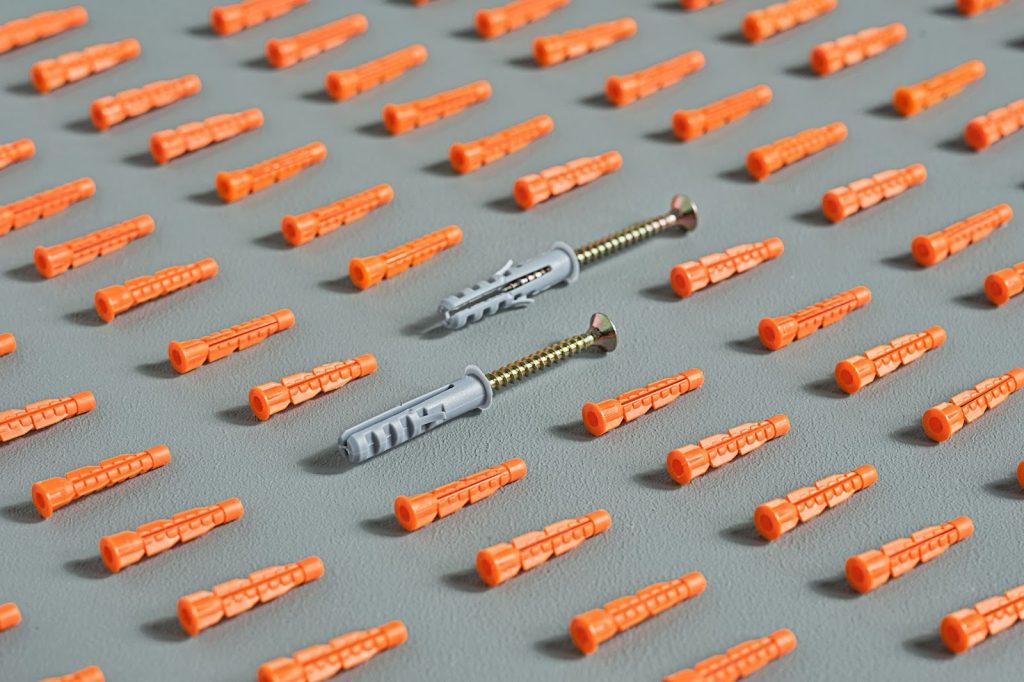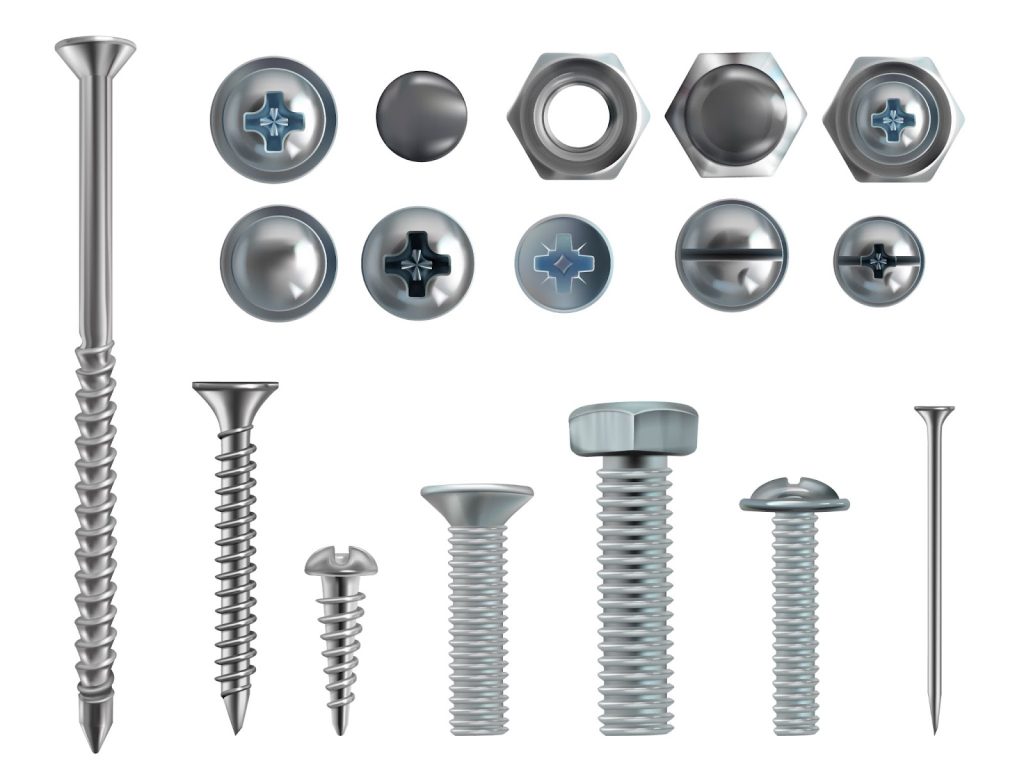Bolts vs Set Screws: Key Differences Explained
Bolts and set screws may look similar, but the key distinction is that bolts are designed to fasten two components together using a nut, while set screws are used to secure one object within or against another without requiring a nut.
This fundamental difference affects their design, applications, and installation methods, making it essential to choose the right fastener for the job.
Although both bolts and set screws belong to the fastener family, they have notable differences in design that impact their function and application.
Read on to learn more.

Bolts vs. Set Screws: Quick Comparison
| Feature | Bolts | Set Screws |
| Threading | Partially or fully threaded | Fully threaded |
| Requires Nut? | Yes | No |
| Head Type | External (hex, square, flange, etc.) | Internal drive (hex, Torx, slotted) |
| Main Function | Joins two components with a nut | Secures one object within another |
| Installation | Insert through a hole, tighten with a nut | Screws directly into a threaded hole |
| Common Uses | Machinery, construction, automotive | Gears, pulleys, shower handles, electronics |
| Popular Materials | Steel, stainless steel, brass, titanium | Brass, nylon, stainless steel |
| Example Types | Hex bolts, carriage bolts, flange bolts | Cup point, flat point, half dog, tapered |
Bolts vs Set Screws: Key Differences Explained
Threaded Shank
Bolts have a partially or fully threaded shank and are typically used with a corresponding nut to create a secure joint.
In contrast, a set screw is fully threaded and does not require a nut. Instead, it exerts pressure directly onto the surface of the object it fastens.
Head Type
Bolts come in various head types, including hex, square, and flange heads, which allow for tightening with tools such as wrenches and sockets.
Set screws, on the other hand, often have no external head and are driven using an internal socket or driver, such as an Allen set screw (hex key), Torx screwdriver set, or slotted drive.
This design makes set screws ideal for flush mounting in machinery and equipment.
Materials and Strength
Bolts are generally made from steel, stainless steel, brass, and titanium, and they often come with strength ratings based on industry standards.
Set screws, including brass set screws and nylon tip set screws, are also available in different materials, depending on the application.
Common Features of Bolts vs. Set Screws
| Feature | Bolts | Set Screws |
| Threading | Partially or fully threaded | Fully threaded |
| Requires Nut? | Yes | No |
| Head Type | External (hex, square, flange, etc.) | Internal drive (Allen, Torx, slotted) |
| Material Options | Steel, stainless steel, titanium, brass | Brass, nylon, stainless steel |
| Common Use | Fastening two components together | Securing one object within another |
Application Comparison of Bolts and Set Screws
The primary function of a bolt is to hold two components together by using clamping force from the nut and tension in the bolt.
In contrast, a set screw applies direct pressure onto an object, such as securing a gear onto a shaft.
Application Differences Table
| Application | Bolts | Set Screws |
| Machinery | Secures parts together | Prevents rotational movement |
| Plumbing | Used in pipe connections | Holds shower and faucet handles |
| Electronics | Fastens casings and frames | Non-conductive fastening (nylon set screws) |
| Automotive | Assembles body panels and frames | Holds parts in place inside engines |
Common Uses of Bolts
- Machinery assembly: Used in heavy equipment, vehicles, and engines.
- Construction: Bolts secure structural components in buildings and bridges.
- Furniture: Found in bed frames, tables, and chairs.
Common Uses of Set Screws
- Shower and faucet handle: A shower handle set screw or faucet set screw secures the handle to the valve stem.
- Machine components: A square head set screw or cup point set screw is used to lock gears, pulleys, and knobs onto shafts.
- Electronics: Nylon set screws provide non-conductive fastening in electrical applications.
Installation Comparison of Bolts and Set Screws
Bolts Installation
- Insert the bolt through aligned holes in the components.
- Place a nut on the threaded end and hand-tighten it.
- Use a wrench or socket to apply torque and secure the connection.
Set Screws Installation
- Position the set screw inside a threaded hole.
- Use an Allen key, Torx screwdriver set, or other appropriate tool to tighten.
- Ensure the set screw applies enough pressure to hold the object in place without damaging it.
Types of Set Screws
Set screws come in different point types and drive styles, allowing for versatility in various applications.
Set Screws of Different Point Types
Each type of set screw tip serves a different purpose in securing objects.
| Set Screw Type | Description & Use Case |
| Cup Point Set Screw | Most common; provides a strong grip without damaging surfaces. |
| Flat Point Set Screw | Suitable for softer materials, distributing pressure evenly. |
| Half Dog Set Screw | Partially extends into a slot for semi-permanent fastening. |
| Tapered Set Screw | Used in high-vibration environments to prevent loosening. |
Numerous Drive Styles
Set screws also vary in their drive types, allowing for different tightening methods.
| Drive Type | Common Applications |
| Hex Set Screw | Machinery, shafts, and gears |
| Torx Drive | Electronics, automotive |
| Slotted Drive | General use, older equipment |

Importance of Choosing the Right Fastener
Selecting the correct fastener is crucial for ensuring durability, reliability, and safety in mechanical and structural applications.
Fasteners play a vital role in holding components together, and their performance directly affects the integrity of an assembly.
Using the wrong type can lead to premature wear, loosening, or even failure of the assembled components.
For instance, using a set screw instead of a bolt in a high-load structural application may result in inadequate strength, while an oversized bolt in a delicate assembly can cause material stress or cracking.
Additionally, factors such as material composition, threading type, and head design determine how well a fastener performs in different environments.
Stainless steel fasteners, for example, offer excellent corrosion resistance for outdoor or marine applications, whereas nylon tip set screws protect delicate surfaces in precision machinery.
Choosing the right fastener also impacts ease of installation and maintenance.
Some applications require frequent disassembly, making hex bolts with nuts a better option, while set screws with locking mechanisms are ideal for securing components with minimal space for adjustments.
Ultimately, investing time in selecting the right fastener for the job helps prevent costly repairs, enhances the longevity of the assembly, and ensures the overall safety of the structure or equipment.
Order High-Quality Fasteners from CNRL
CNRL is a trusted set screw supplier and manufacturer of high-performance fasteners, offering products that meet industry standards.
Whether you need socket set screws, nylon tip set screws, or brass set screws, CNRL provides precision-engineered solutions for various applications.
Contact CNRL today to get started!
Conclusion: Bolts vs Set Screws
Understanding the difference between bolts and set screws is essential for selecting the right fastener for your project.
Bolts are best for joining two components with a nut, while set screws are used to secure objects within or against another surface.
By considering factors such as material, head type, and application requirements, you can ensure a strong and reliable fastening solution.
Resources
CNRL Fasteners uses only high-quality sources, including peer-reviewed studies, to support the facts within our articles. Our commitment to accuracy and reliability ensures that readers receive well-researched information they can trust.